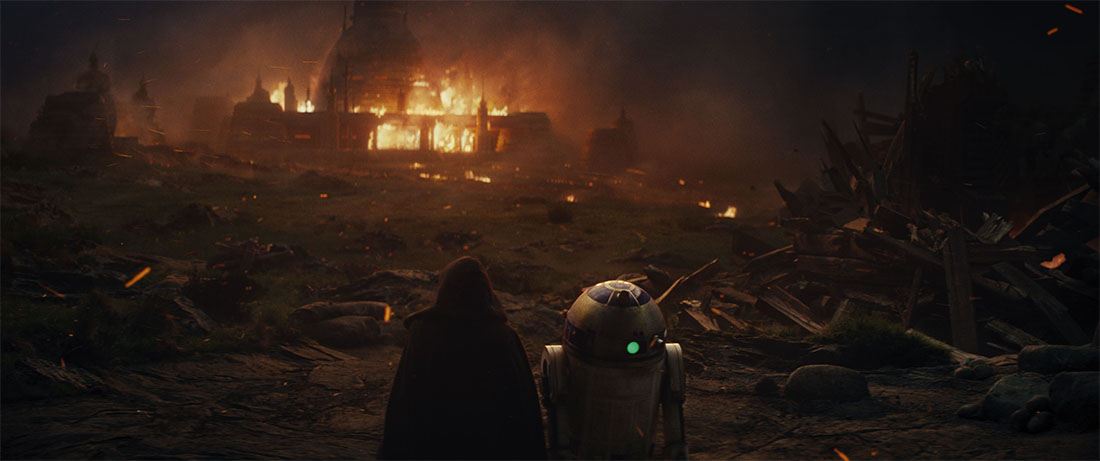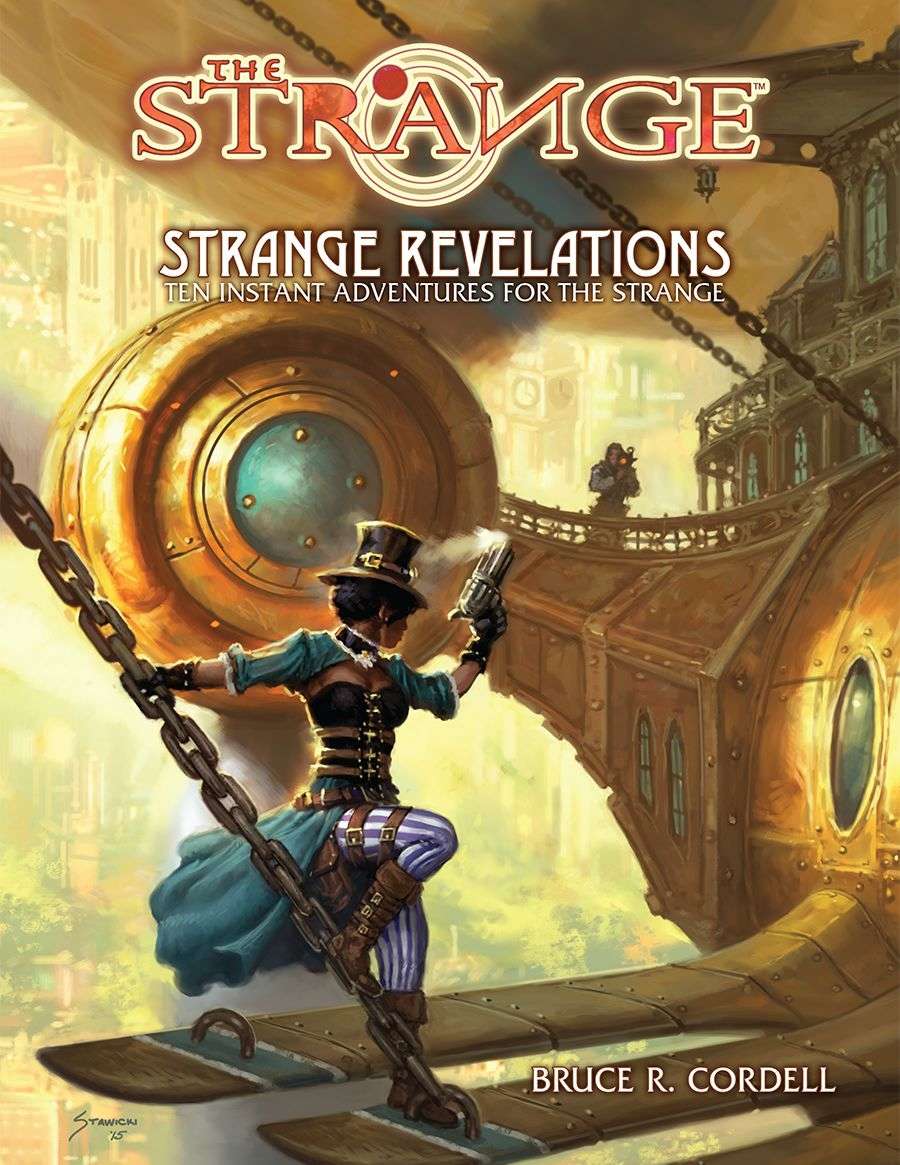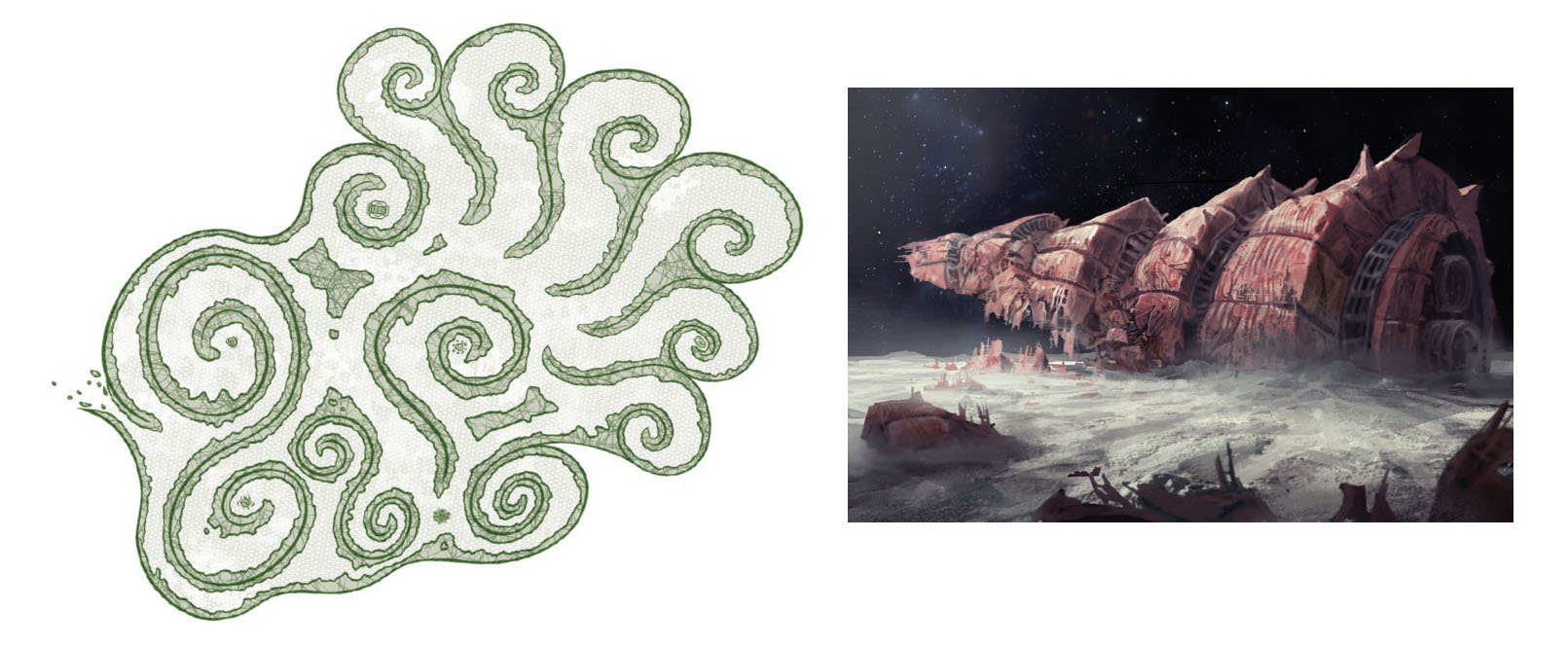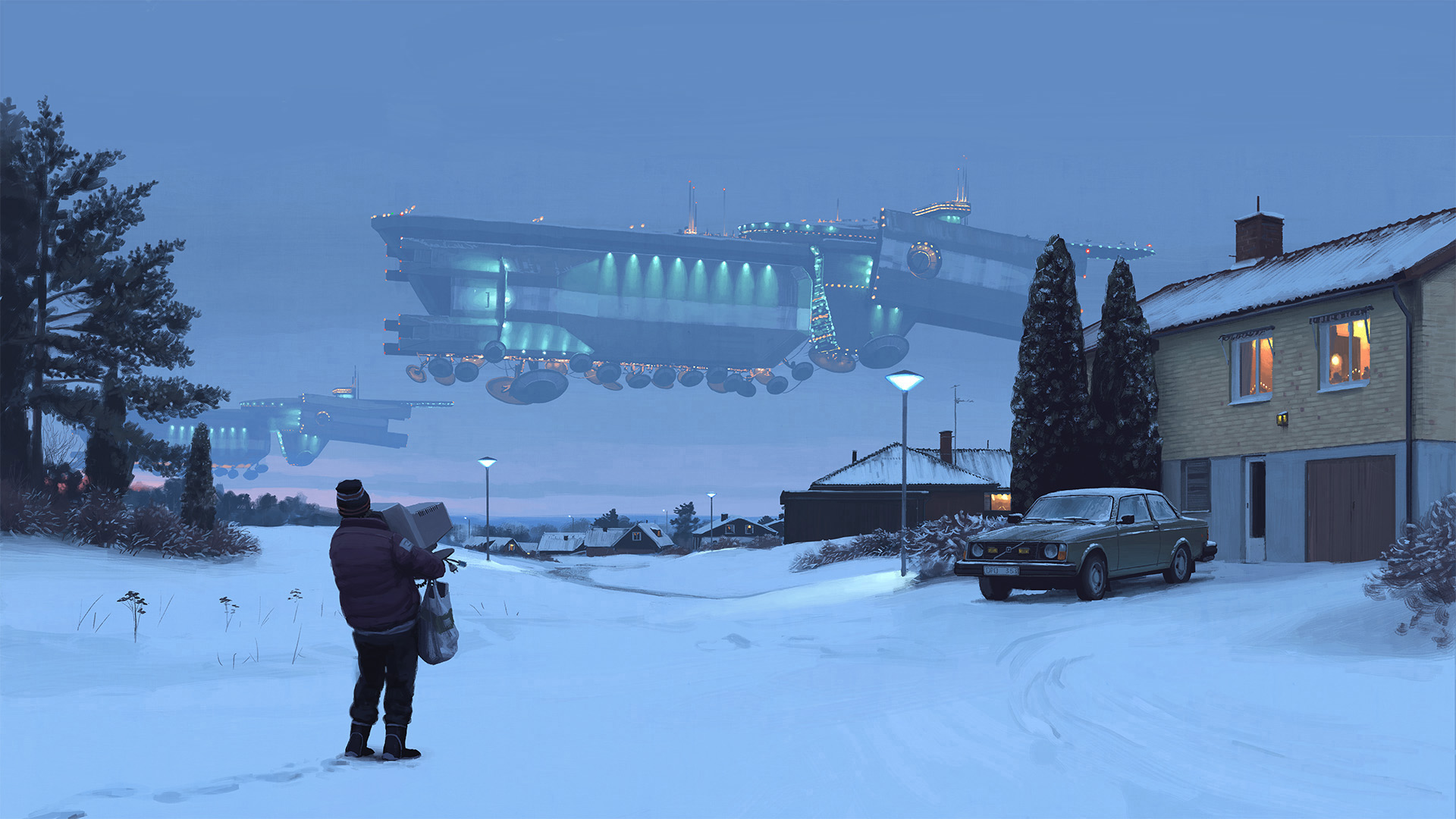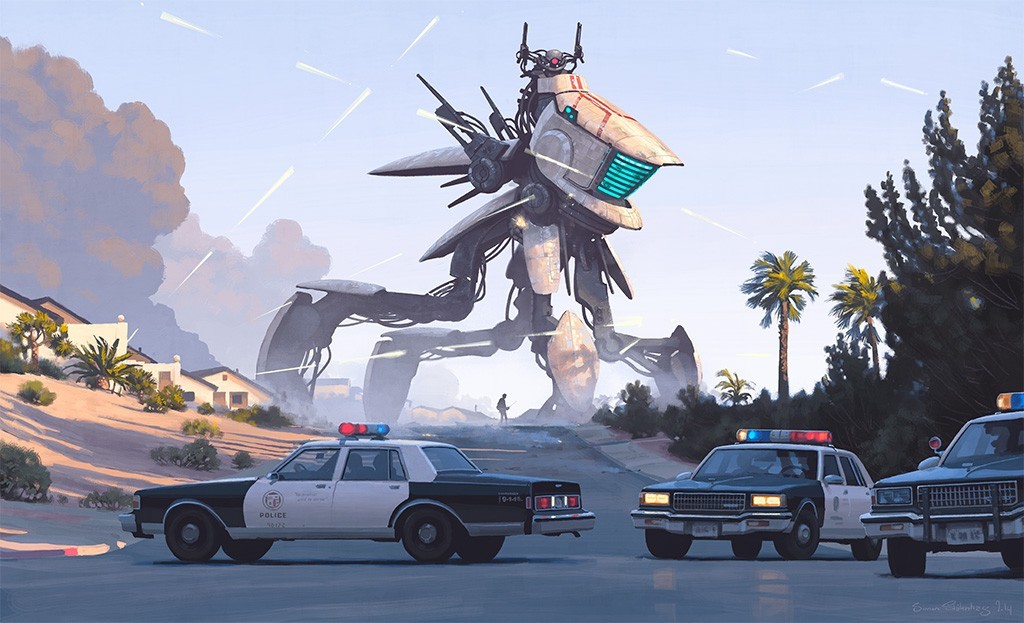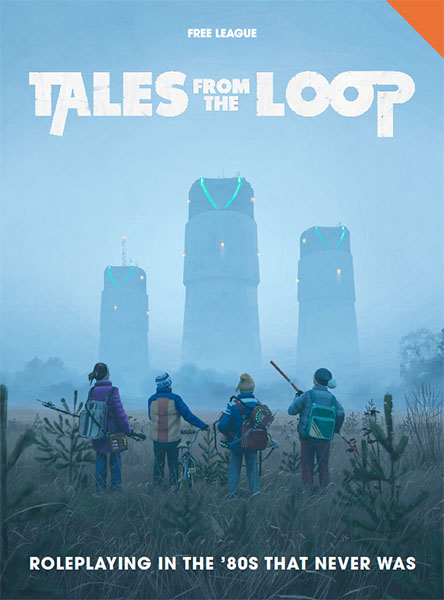THE STRANGE BESTIARY
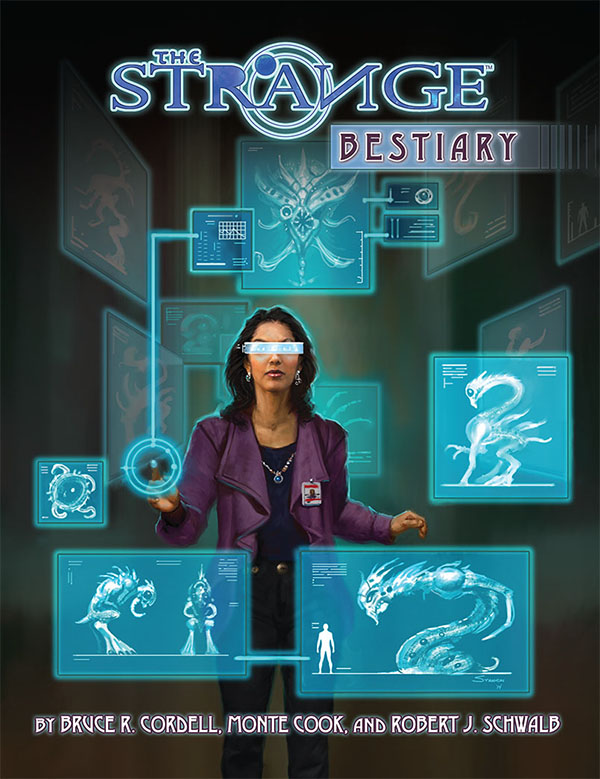 The Strange Bestiary is 160 pages, packed almost cover-to-cover with a fantabulous array of creatures drawn from across the rich breadth of recursions found in the Shoals of Earth. While there are a few familiar faces (a handful of Lovecraftian beasties and a selection of fan favorite dinosaurs), for the most part it is a scintillating display of creative imagination.
The Strange Bestiary is 160 pages, packed almost cover-to-cover with a fantabulous array of creatures drawn from across the rich breadth of recursions found in the Shoals of Earth. While there are a few familiar faces (a handful of Lovecraftian beasties and a selection of fan favorite dinosaurs), for the most part it is a scintillating display of creative imagination.
This selection is lightly rounded out with some general advice on creature design for The Strange and a little over a half dozen specific NPC characters (like Sasha the Blade and Doctor Ceratops).
Bestiaries in all of their varied forms are, of course, a long-term staple of the roleplaying industry. After several decades of perusing them, I’ve come to the conclusion that their quality can generally be measured by looking at three metrics: Basic Utility, Art, and Scenario Ideas.
Basic Utility refers to the bestiary’s ability to fully stock a typical campaign. This category is particularly important for games in which statting up bad guys is a time consuming task. In those systems, I need a resource that will cover the basic staples. A lot of games – particularly modern and science fiction games – completely pratfall in this category, frequently failing to provide any basic utility. (A notable exception to this is Eclipse Phase, which provides the absolutely essential NPC File supplement.)
The Strange Bestiary – like the core rulebook before it – kind of flirts with this a little bit, but in offering less than a half dozen such options it’s really not trying all that hard. BUT this is largely irrelevant, because the simplicity of the Cypher System would make the exercise largely pointless: Statting up an NPC basically consists of assigning them a single number. You don’t need a supplement to do that for you.
Art should be fairly self-explanatory. The more exotic and unique the creatures described in a bestiary, the more vital I consider truly excellent art to be. As I described in “On the Importance of Art in Bestiaries”, the difference between a fantastic creature that immediately captures your imagination and one which you never give a second thought to often has more to do with the art which accompanies it than the text which describes it or the stats which define it. Furthermore, I find the ability to use high quality art as a handout at the table to be something that really enhances a session.
Like everything else Monte Cook Games has produced, The Strange Bestiary features generally fantastic art. Flipping through the book, you’re just constantly captivated by evocative, beautiful, memorable art that will make you immediately want to feature it in your campaign.
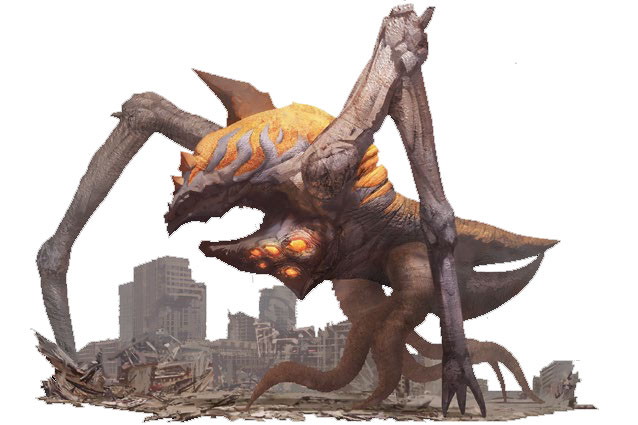 However, I am going to ding the PDF version of the book pretty severely here. I am uncertain how to explain what can only be frankly described as Monte Cook Games’ complete incompetence when it comes to producing the PDF versions of their books, but like virtually every other MCG PDF I own, the artwork in The Strange Bestiary is pixelated to the point of becoming completely unusable. In many cases, it is nothing more than an ugly smear across the page. (In the core rulebook for The Strange, this problem was so bad that maps literally became illegible.) You can see one of the less terrible examples by clicking the image to the right and viewing it at “full” size.
However, I am going to ding the PDF version of the book pretty severely here. I am uncertain how to explain what can only be frankly described as Monte Cook Games’ complete incompetence when it comes to producing the PDF versions of their books, but like virtually every other MCG PDF I own, the artwork in The Strange Bestiary is pixelated to the point of becoming completely unusable. In many cases, it is nothing more than an ugly smear across the page. (In the core rulebook for The Strange, this problem was so bad that maps literally became illegible.) You can see one of the less terrible examples by clicking the image to the right and viewing it at “full” size.
I’m not sure why MCG is systemically incapable of producing acceptable PDFs of their books. They certainly charge enough for them that there’s no excuse for their shoddy quality. It’s a very significant embarrassment for an otherwise sterling company.
Scenario Ideas. One of my fondest memories is sitting down with the 2nd Edition Monstrous Manual for AD&D and reading through it cover-to-cover while taking copious notes for how each of its copious entries could be incorporated into my campaign world.
Above all other concerns, I believe the measure of quality for a bestiary lies in the ideas it inspires within its reader. And by this measure The Strange Bestiary is an exemplary volume: By the time I had finished perusing its contents, I had generated more than two dozen scenario ideas; enough to fuel months of gaming and probably more than one campaign.
A really fine book and one which I would heartily recommend for any GM getting ready to translate their way into the Strange.
Style: 4 (2 for PDF)
Substance: 4 (3 for PDF)
Author: Bruce R. Cordell, Monte Cook, and Robert J. Schwalb
Publisher: Monte Cook Games
Print Cost: $39.99
PDF Cost: $14.99
Page Count: 160
ENCYCLOPEDIA OF IMPOSSIBLE THINGS
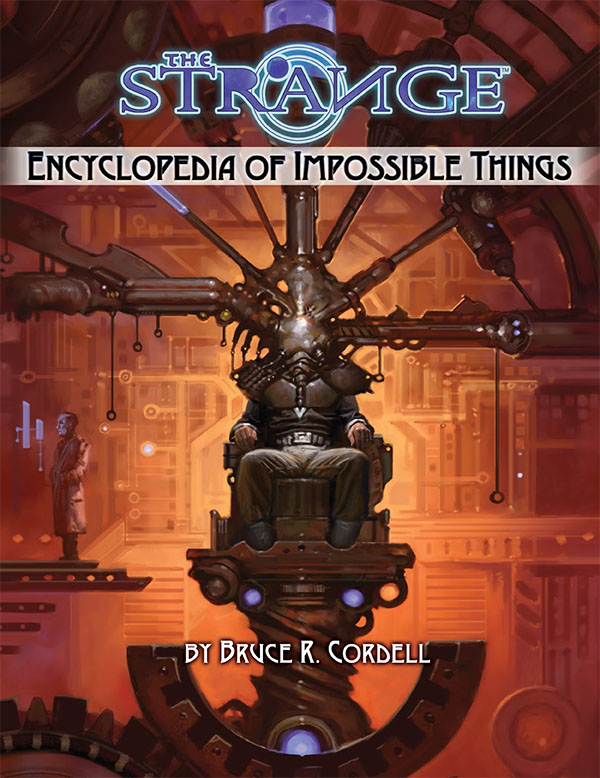 The Encyclopedia of Impossible Things is an equipment handbook for The Strange: In addition to adding hundreds of new cyphers, it also introduces the concept of “artifacts” to the game.
The Encyclopedia of Impossible Things is an equipment handbook for The Strange: In addition to adding hundreds of new cyphers, it also introduces the concept of “artifacts” to the game.
First, the new Cyphers. Taking up a wide swath of the book, these are probably the primary utility of the book and, if you’re running a campaign of The Strange, almost certainly make the book worth purchasing entirely in their own right.
There’s a reason the Cypher System is named after these one-use items (which create a constant, semi-random churn of a group’s capacities and, thus, continuously sparks the game with a fresh feed of creative and unexpected play), and increasing their variety by more than six-fold is a huge asset for any game. (I’ll also note that, as far as I can tell, the crossover with the Technology Compendium for Numenera is extremely minimal, so that buying both books also represents a good value.)
My one critique of the new cyphers is that a significant minority of them are just game mechanics that are left floating around without any comprehensible connection to the game world. For example:
INFILTRATOR
Earth: Thin black gloves
Ardeyn: Amulet
Ruk: Spine graft
Effect: The user has an asset on lying, sneaking, lockpicking, falling, and resisting torture for twenty-four hours.
I get that these are basically the equivalent of skill boost magic items from D&D, but in D&D the form and function of the item tend to be obviously connected: Gauntlets of ogre strength give you a boost to Strength because they push, pull, and punch. How do thin black gloves help you lie?
This is a particularly egregious example because the grab-bag of purely mechanical effects seems fairy arbitrary. Lying, sneaking, lockpicking… yes, those are all things which would help someone infiltrate. Resisting torture, though? Seems like that’s what happens when you’ve already failed your infiltration. And having an asset on “falling” is weird since it doesn’t really sync up with the core rule mechanics for falling damage. Maybe they were thinking of HALO insertions or base-jumping?
This is a fairly minor critique, however. Although there are a significant number of such items, they’re surrounded by a multitude of more interesting cyphers. And even with these items the GM shouldn’t struggle too much to tweak them or provide forms which make their utility more interesting in-character.
Which brings us to the second major component of the Encyclopedia: Artifacts.
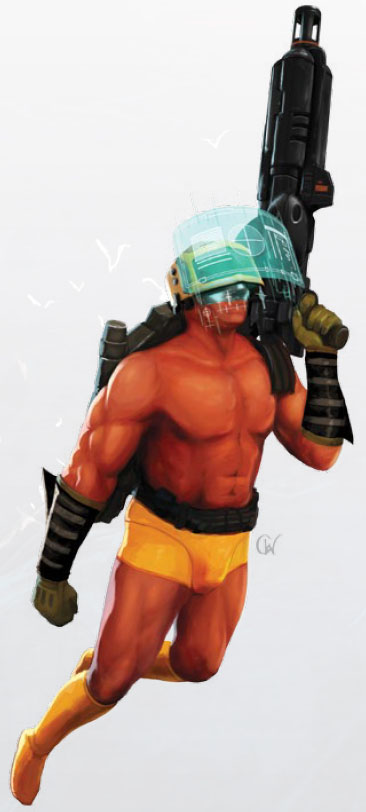 In Numenera, artifacts and cyphers were basically two sides of the same coin: Both were remnants of ancient technology inexplicable to modern understandings of the world. The only distinction was that cyphers were one-shot items and artifacts could be used multiple times before they would stop working (as randomly determined by a depletion roll).
In Numenera, artifacts and cyphers were basically two sides of the same coin: Both were remnants of ancient technology inexplicable to modern understandings of the world. The only distinction was that cyphers were one-shot items and artifacts could be used multiple times before they would stop working (as randomly determined by a depletion roll).
The core rulebook of The Strange didn’t really include artifacts in this sense. Cyphers were manifestations of the Strange itself (possibly bugs, possibly backdoor features originally accessible via the alien equivalent of cheat codes or sysop privileges, possibly some remnant of forgotten network functionality), but it used the term “artifact” to mean “powerful items featuring ‘impossible’ functions that are native to a particular recursion”. So magic items on Ardeyn, crazy bio-science tech on Ruk, and so forth. The nature of these items weren’t intrinsically linked, except insofar as they were all generally modeled using the depletion roll mechanic. On Earth it included stuff like perpetual motion engines and inapposite harnesses.
But the concept was always kind of muddy, because the term “artifact” was ALSO defined to just mean “anything that’s difficult to obtain in that particular recursion”. So on Earth, for example, a pistol is equipment but a rocket-propelled grenade launcher is an artifact.
This muddiness in the core rulebook didn’t really matter because it didn’t list that many artifacts. But in the Encyclopedia the ill-defined nature of artifacts, in my opinion, bloomed into a full-blown problem. Partly this is because the utility of an “artifact” is thoroughly confused — you end up with powerful technology/magic and rare items and items that can translate like cyphers all muddled up into one big grab-bag. But also because the larger multitude of “artifacts” leads the designers to try to hang other mechanics off the term “artifacts”… except the term doesn’t actually mean anything, right?
For example:
DUPE
A physical duplicate of the user, or a touched creature or object, appears next to the user. […] If a duplicate of an artifact is created, the original may become depleted… Likewise, if a cypher is duplicated, the original may dissipate.
So the Dupe can duplicate a shotgun (which isn’t an artifact), but it probably can’t duplicate a rocket-propelled grenade launcher (because it is an “artifact”). And this sort of thing gets even weirder because the Encyclopedia deepens the muddle by realizing that technology which is rare (and therefore an “artifact”) in one recursion may be really common in another recursion (and would therefore not be an “artifact” there). So in some recursions you can’t dupe a shotgun, because they’re unusually rare/powerful there and are therefore considered an “artifact”.
It’s kind of a confusing mess. And a largely unnecessary one.
Personally, the artifacts in my Strange campaign follow the same basic paradigm as in Numenera: They’re based on the same principles as cyphers except they can be used multiple times. (Which, in The Strange, means that they’re manifestations of the Strange itself.)
There’s also other equipment which happens to use the depletion roll mechanic. (Magic wands, for example. Or strange creations of mad science on a superhero recursion.) In many recursions, there’s also technology/magic that can duplicate the function of any number of cyphers… but they’re not actually cyphers. (Just like your Earth-made pistol, they can’t translate and they can function oddly if taken through an inapposite gate.)
If you basically do the same thing, then the seventy or so pages of “Artifacts” in the Encyclopedia can be a really great resources, albeit with a somewhat chaotic arrangement.
The Encyclopedia is rounded out with a half dozen pages describing the creation of personal recursions. Basically you expend a cypher 2 and XP and you create a little pocket dimension for yourself. The concept is interesting, but, much like the rules for genesis quests and creating recursions in the core rulebook, I feel that it’s an idea which really demands more care and attention than it has so far been given in any of the published resources.
Style: 4
Substance: 3
Author: Bruce R. Cordell
Publisher: Monte Cook Games
Print Cost: $39.99
PDF Cost: $14.99
Page Count: 160


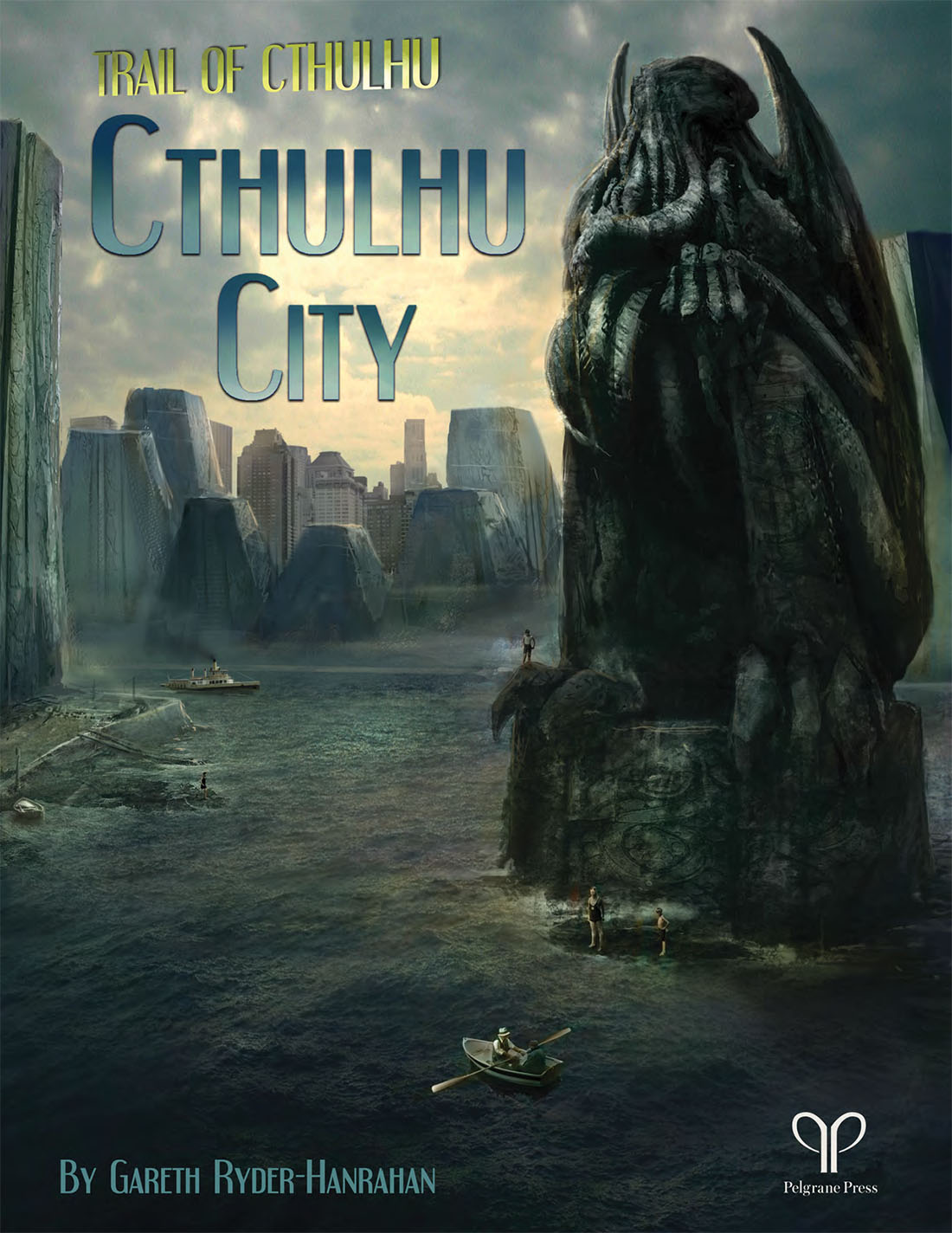 Great Arkham.
Great Arkham.
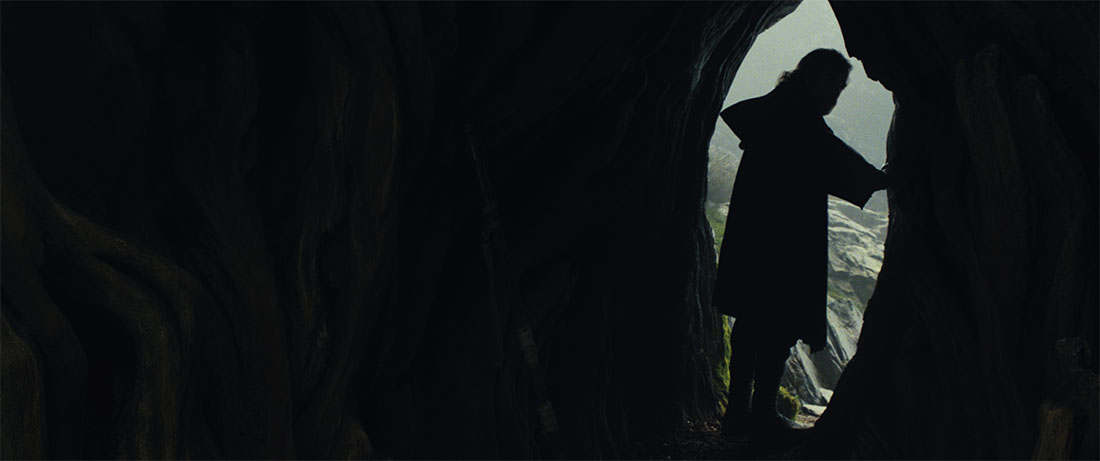
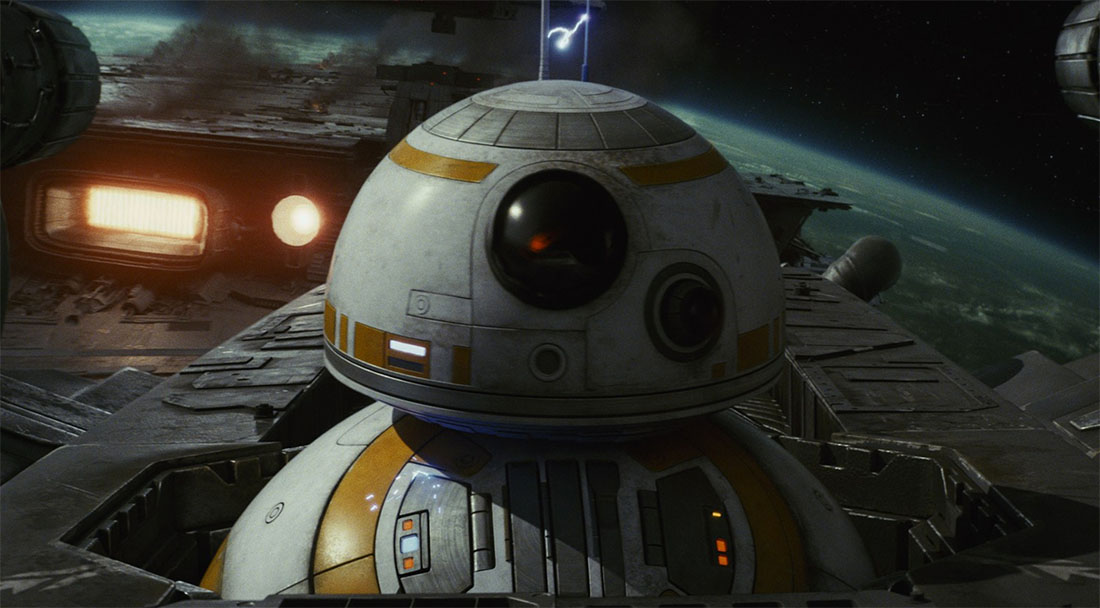
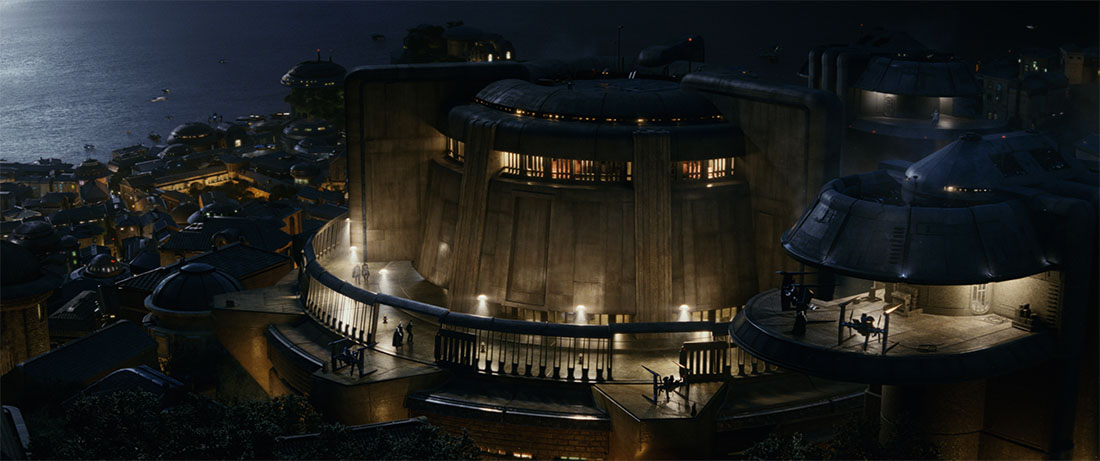
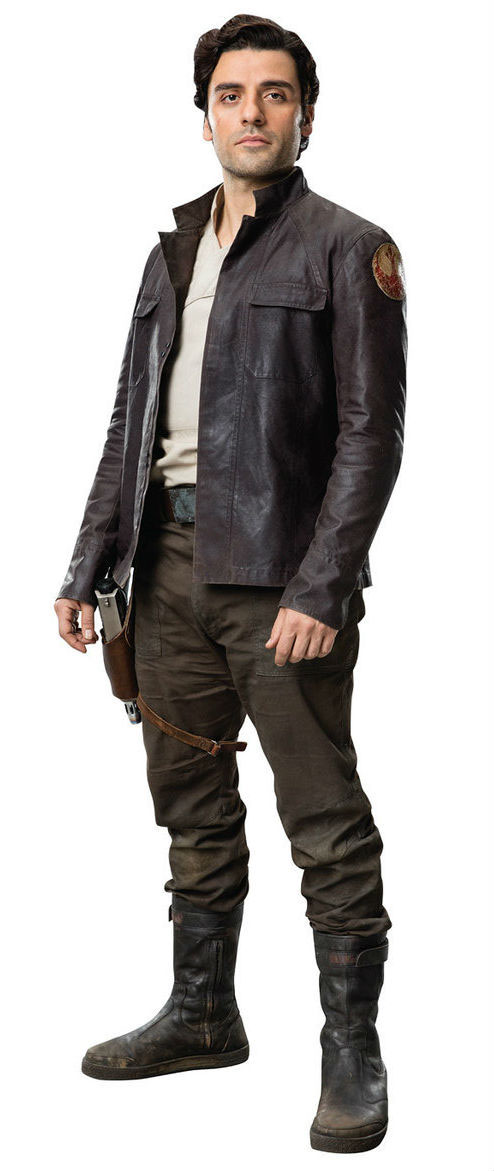 First, Poe’s. This consists of four specific beats:
First, Poe’s. This consists of four specific beats: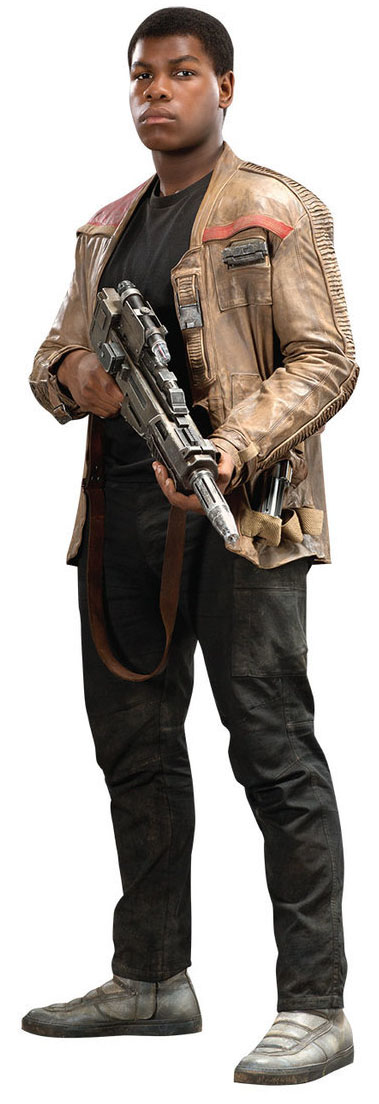 in which humans extend their sense of self in ever-widening concentric circles:
in which humans extend their sense of self in ever-widening concentric circles: Not by actually, literally teaching him shit, but by being the living embodiment of ideas and experiences that he needs to process. Canto Bight is, once again, essential for this because it provides the tapestry on which Rose’s character is revealed, and it is by seeing Canto Bight through Rose’s eyes that Finn learns the lessons he needs to learn.
Not by actually, literally teaching him shit, but by being the living embodiment of ideas and experiences that he needs to process. Canto Bight is, once again, essential for this because it provides the tapestry on which Rose’s character is revealed, and it is by seeing Canto Bight through Rose’s eyes that Finn learns the lessons he needs to learn.